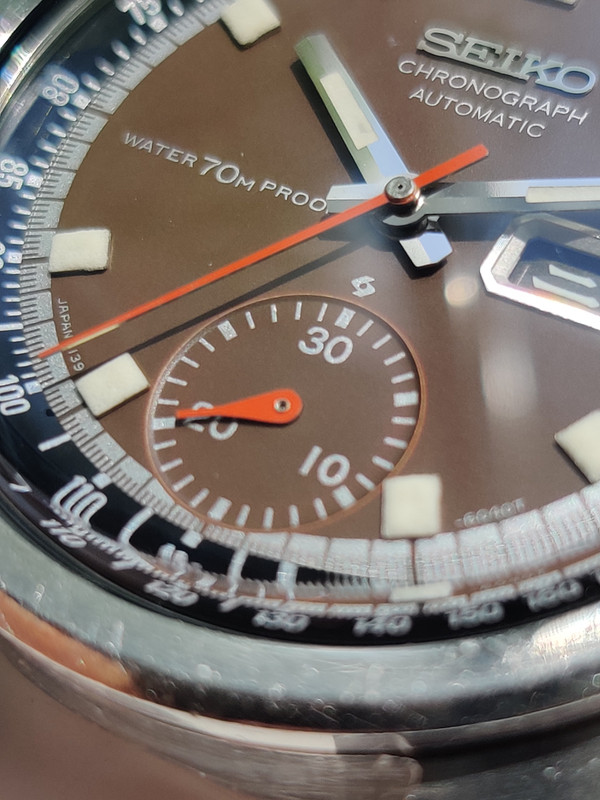It's a Zenith "El Primero" 3019PHC movement, with the rotor taken off. Zenith had been working on a fully integrated automatic chronograph movement for some years but accelerated theirs to market when they heard of the Chronomatic Group's work. They announced the "El Primero" in January 1969, 2 months before the Chronomatic launch, Though watches wouldn't start being in customers' hands until much later that year, with the A384:
Meanwhile, Heuer, Hamilton and Breitling were preparing to launch their first automatic chronographs, using the Cal 11 movement built from a Buren micro-rotor automatic base movement, and a Dépraz chronograph module.
The resulting movement is in many ways less elegant than the Zenith one; lower jewel count (El Primero's 31 to Cal11's 17), lower beat frequency (Zenith 36000bph, Cal11 19,800) and it was bulkier too (7.7mm high vs Zenith's 6.5mm) and with a slightly lower power reserve. [3019PHC vs Cal11]
Still, they had quite a variety of watches all featuring the distinctive left-hand crown (part of the fusion of two movements, meaning that to fit better in the case, they flipped it so the crown was on one side and the pushers on the other). Most iconic, of course, was the Heuer Monaco, the first square cased watch that was also "water proof".
When Steve McQueen was filming "Le Mans" in 1970, Heuer had been engaged in providing timing equipment and some prop watches; though McQueen reportedly favoured wearing an Omega in the film, the props team pointed out that the Heuer shield on his race suit (same as one worn by Jo Siffert) meant that would be inconsistent, so he strapped on a Monaco instead. Apparently, he also thought that if he had been wearing a Rolex or Omega, those companies would have used him in their advertising, which he didn't want to happen...





 ]
]

 Reply With Quote
Reply With Quote

































